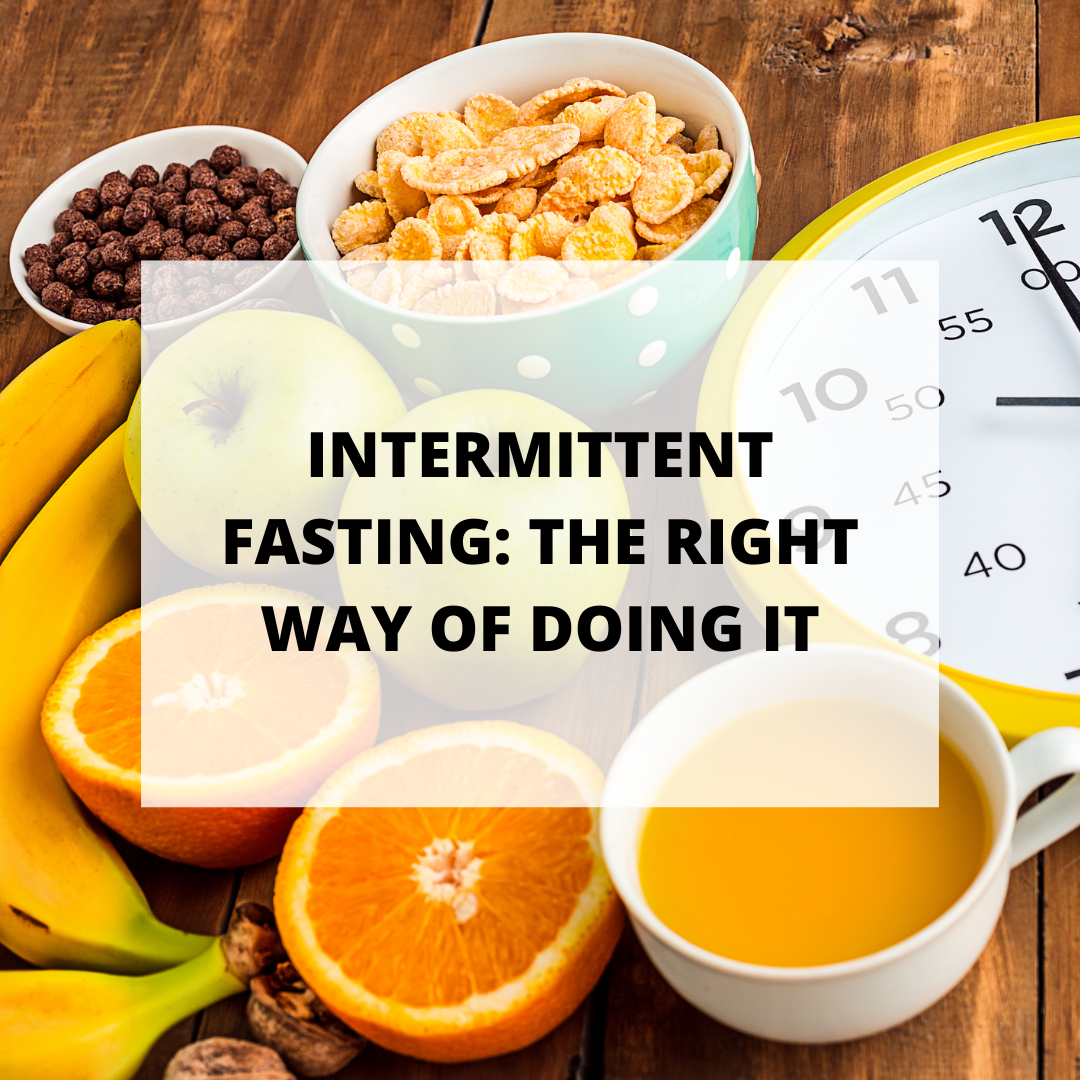
Intermittent Fasting: The Right Way of Doing It
Intermittent fasting is a popular diet trend that involves cycling between periods of eating and fasting. This approach has gained a lot of attention in recent years due to its potential health benefits, including weight loss, improved metabolic health, and increased longevity. However, it's important to understand the basics of intermittent fasting before giving it a try.
WHAT IS INTERMITTENT FASTING?
Intermittent fasting is not a diet, but rather an eating pattern that involves alternating periods of eating and fasting. There are several different methods of intermittent fasting, including:
- The 16/8 method: This involves restricting your daily eating period to 8 hours and fasting for the remaining 16 hours.
- The 5:2 diet: This involves eating normally for 5 days of the week and restricting calorie intake to 500-600 calories on the other 2 days.
- Alternate day fasting: This involves alternating between days of unrestricted eating and days of fasting or restricted calorie intake.
WHO IS INTERMITTENT FASTING FOR?
Intermittent fasting can be beneficial for people who are looking to lose weight, improve their metabolic health, and increase their longevity. However, it's important to note that it may not be appropriate for everyone. Pregnant women, people with a history of eating disorders, and people with certain medical conditions should consult their healthcare provider before trying intermittent fasting.
HOW TO DO INTERMITTENT FASTING?
Intermittent fasting can be done in different ways, depending on the individual's preferences and lifestyle. Here are some tips for getting started with intermittent fasting:
- Choose a fasting method that suits your schedule and lifestyle.
- Gradually increase your fasting duration over time, rather than jumping straight into long fasts.
- Stay hydrated during the fasting period by drinking water, herbal tea, or other non-caloric beverages.
- Break your fast with a healthy, balanced meal that includes protein, healthy fats, and fiber.
- Be patient and give your body time to adjust to the new eating pattern.
PROS OF INTERMITTENT FASTING
Intermittent fasting has been associated with several potential health benefits, including:
- Weight loss: Intermittent fasting can help reduce calorie intake, which can lead to weight loss.
- Improved metabolic health: Intermittent fasting has been shown to improve blood sugar control, insulin sensitivity, and other markers of metabolic health.
- Increased longevity: Some studies suggest that intermittent fasting may increase lifespan and reduce the risk of age-related diseases.
CONS OF INTERMITTENT FASTING
Intermittent fasting may not be suitable for everyone and may have some potential drawbacks, including:
- Hunger and cravings: Fasting can cause hunger and cravings, which may make it difficult to stick to the eating pattern.
- Fatigue and weakness: Some people may experience fatigue, weakness, or difficulty concentrating during the fasting period.
- Disordered eating: Intermittent fasting may be a trigger for disordered eating patterns in some people.
In conclusion, intermittent fasting can be a safe and effective way to improve your health and well-being. However, it's important to choose a fasting method that suits your lifestyle and consult your healthcare provider before giving it a try. With patience and persistence, intermittent fasting can become a sustainable eating pattern that helps you achieve your health goals.
GOOD DAY OF EATING DURING INTERMITTENT FASTING:
- 12 PM: Break your fast with a healthy, balanced meal that includes protein, healthy fats, and fiber. For example, you could have a salad with grilled chicken, avocado, and vegetables.
- 3 PM: Snack on some nuts, berries, or a piece of fruit.
- 6 PM: Enjoy a dinner that includes lean protein, vegetables, and healthy fats. For example, you could have grilled fish with roasted vegetables and a side salad.
- 8 PM: Have a small snack if you're hungry. Some good options include Greek yogurt with berries or a handful of almonds.
On a good day, you're able to eat nutrient-dense meals that are satisfying and provide you with the energy you need to get through the day. You're also able to stick to your fasting schedule without feeling overly hungry or deprived.
BAD DAY OF EATING DURING INTERMITTENT FASTING:
- 10 AM: Break your fast with a high-sugar, high-carb breakfast such as a donut or pastry.
- 1 PM: Eat a fast food meal that is high in calories, saturated fat, and sodium.
- 4 PM: Snack on candy, chips, or other junk food.
- 7 PM: Enjoy a large dinner that is high in calories and saturated fat, such as a burger and fries.
- 9 PM: Have a late-night snack that is high in sugar and calories, such as ice cream or cookies.
On a bad day, you're not able to stick to your fasting schedule or eat nutrient-dense meals. Instead, you're consuming a lot of high-calorie, high-sugar, and high-fat foods that do not provide your body with the nutrients it needs. This type of eating can lead to weight gain, poor metabolic health, and other negative health consequences.
Planning an intermittent fasting type of diet can be challenging especially if we want to hit a specific number of macros each day. AutoMealPlanner makes it easy to generate a custom diet and know how much you should eat in each meal.

